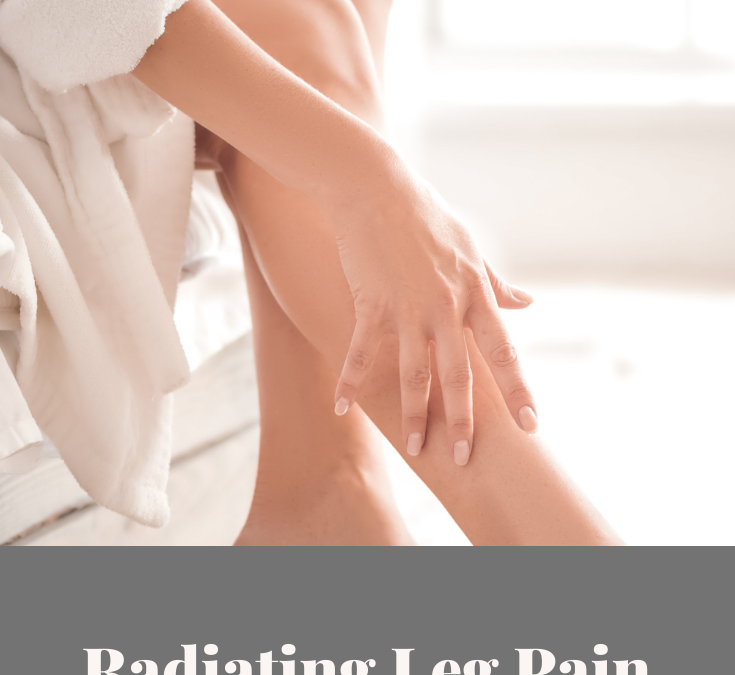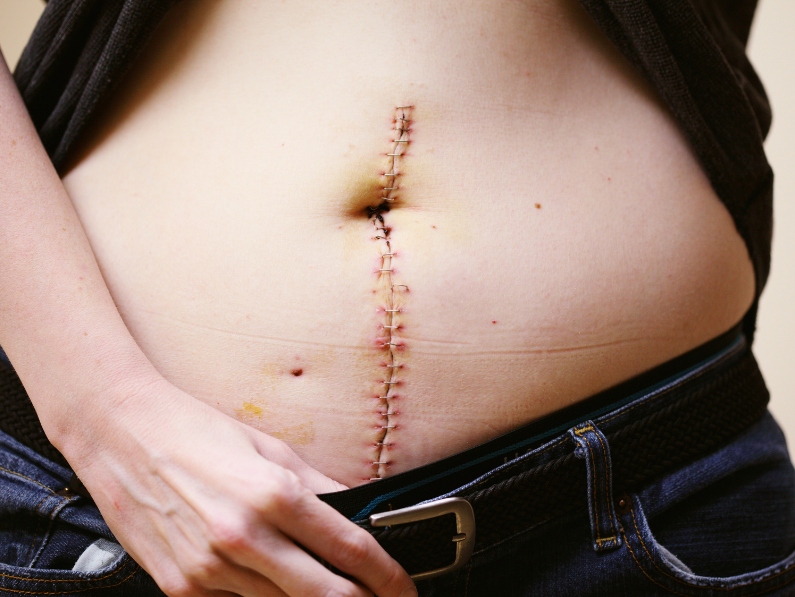On average, 50% of endo patients experience radiating leg pain associated with endometriosis. And while conditions such as herniated discs, muscle strains, and bone spurs can cause radiating leg pain— endometriosis is another condition that contributes to this type of pain. Symptoms such as pelvic pain, painful periods, and painful intercourse are relatively common pain points. Still, they’re far from the only ones.
Page Contents
How Endo Causes Radiating Leg Pain
When it comes to Endo-related pain, it’s caused by endometriosis, attaching itself to structures that it shouldn’t belong on. Common locations for endometrial implants are the peritoneum, fallopian tubes, ovaries, and organs within the pelvic cavity. However, extra pelvic endometriosis can lead to implants on structures such as the lungs, bowels, urinary tract, and central nervous system. Therefore, endometriosis can impact nerves such as the sciatic nerve and contribute to radiating leg pain, becoming a pain point for patients.
Traditionally extra pelvic endometriosis was thought to be a rare occurrence. Yet, it’s becoming more common. This may indicate that it’s not uncommon; instead, it is under-diagnosed. The lack of proper diagnosis of extra pelvic endometriosis can be blamed on the medical community’s inability to understand endometriosis due to limited research and archaic definitions. Endo-patients and non-Endo-patients alike must become more body literate and understand how to identify potential endometriosis symptoms and advocate for their health with their doctor.
Understanding What Endo Leg Pain Feels Like
Endo leg pain can be triggered at various points and times throughout your menstrual cycle. You may find that this discomfort is commonly experienced during ovulation, right before your period starts, during your period, or due to a flare-up. Additionally, certain types of exercise and/or body movements may exacerbate it as well.
When experiencing this pain, it may begin as a sharp, stabbing pain in the lower abdomen that progresses to a severe tingling, pulsating sensation. This sensation proceeds to travel to your buttocks and top of your foot. Often, this pain is so intense and sharp that your leg becomes numb, and you’re unable to move while feeling dizzy and faint. And while this description highlights my experience with Endo-related leg pain, it isn’t the standard. How you experience pain may be different depending on where your endometrial lesions are located and how your body responds to pain.
Regardless of how pain manifests itself for you, it doesn’t distract from the fact that it’s real, and the root cause could be endometriosis. You should seek medical care if you find that your pain doesn’t respond to over the counter medication, or if your pain interferes with your quality of life. Meaning you’re frequently missing school, work, and feel like you can’t function and take care of yourself. Furthermore, if your leg pain is synonymous with other endo symptoms like painful periods, chronic pelvic pain, painful intercourse, or a family history of endometriosis, please seek medical attention.
Speaking to Your Doctor
This process may vary depending on where you’re at on your diagnosis journey. If you’re still trying to figure out if you indeed have endometriosis, you may still be searching for that “Goldilocks” doctor or specialist. If so, make sure you disclose all symptoms, including your radiating leg pain with any new doctor or specialist that you meet. Focus on letting them know how long you’ve dealt with this pain, additional symptoms accompanying it (i.e., pelvic pain, extreme bloating, painful intercourse).
And discuss your menstrual health history. If it’s applicable, share your family history of endometriosis. If your sister or mother had endo, this increases your risk and is definitely necessary for the diagnostic process. I recently wrote a post Talking to Your Doctor About Endometriosis. This can help guide you on your journey towards diagnosis and treatment.
If you currently have a doctor or specialist that you work with to manage your endometriosis, schedule an appointment, and discuss what you’re experiencing with your leg pain. Ask them if this could be linked to your endometriosis and what next steps could be taken.
Managing Leg Pain
Aside from working with a doctor that specializes in treating and managing endometriosis, there are things you can do in the meantime to get relief for your discomfort.
Gentle Low Impact Movement
It may seem counterintuitive to try and move when you’re experiencing radiating leg pain. Yet, doing the right types of movement can be a game-changer. For example, low impact walking can help decrease pain by improving circulation, reducing stiffness, and releasing pain-fighting endorphins into the body.
Additionally, foam rolling and gentle stretching is also a must for decreasing leg pain.
Hot/Cold Therapy
Using hot water bottles, heat wraps, or cooling ice packs can help ease the pain. The method that works best on your unique pain will depend on what your body responds positively to.
Chiropractic & Massage Therapy
Chiropractic care and massage therapy are both excellent for easing leg pain. When it comes to chronic pain, the ongoing irritation and inflammation begin to impact the body holistically. This manifests with the spinal column becoming misaligned, tight muscles, and joint stiffness. All of which can increase leg pain. However, getting adjustments puts the spine in proper alignment, which decreases nerve pain and muscle spasms. Additionally, regular massages help soothe and relax tense muscles, which reduces nerve pressure and lessens discomfort.
Nutritional Adjustments
Making dietary changes by increasing the number of antioxidants and anti-inflammatory foods you consume can decrease inflammation within the body. Consuming foods such as fatty fish (salmon, tuna), berries, spinach, tomatoes, grapes, avocados, and broccoli can naturally help fight against inflammation. Additionally, drinking green tea is another excellent way to decrease inflammation and oxidative stress in the body.
And, while you’re increasing your intake of anti-inflammatory foods, work on decreasing the number of pro-inflammatory foods and trigger foods you eat. Pro-inflammatory foods such as processed foods are high in added sugar, trans fats, and refined carbohydrates, all of which increase inflammation.
Trigger foods are food intolerances that cause your body to react and vary from person to person. Some people may find that dairy triggers flare-ups and pain, while others don’t experience such an effect. Listening to your body and becoming more aware of how the foods you consume impact your body can help you identify trigger foods so you can find alternatives that you can swap into your diet.
You’re Not Alone
If you’re one of the 50% that experiences radiating leg pain with endometriosis, you’re not alone. While it’s not talked about as much, it’s still a genuine symptom that needs to be addressed and adequately treated. Identifying and treating the root cause of Endo-related leg pain begins with finding a medical professional specializing in endometriosis and knows how to accurately diagnose and treat it. Whether your treatment plan consists of surgical intervention or therapeutic intervention totally depends on what you and your doctor decides is best. Furthermore, combining alternative therapies such as low impact movement, hot/cold therapy, chiropractic care, massage therapy, and nutritional adjustments can provide a well-rounded approach to managing your leg pain and endometriosis.
References
About the Author

Hi, my name is Kathleen but you can call me Kat. I’m a health and wellness professional turned freelance writer and content creator. You can find me on YouTube and Instagram. If you take the opportunity to visit me on my other platforms don’t hesitate to leave a message, I would love to hear from you!
Subscribe!
Get updates delivered directly to your inbox!
[gravityform id=”1″ title=”false” description=”true”]






